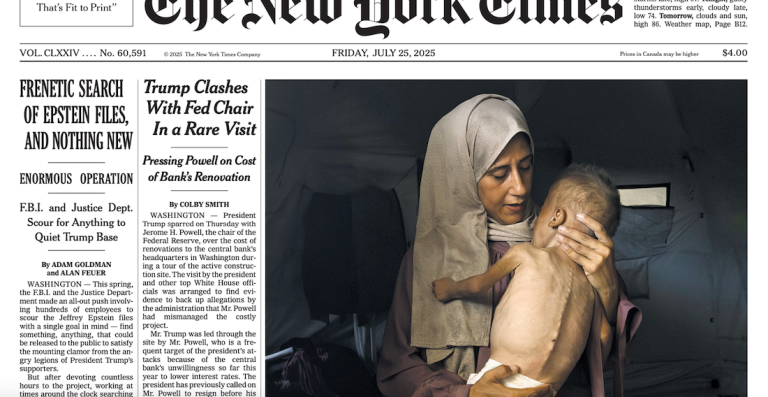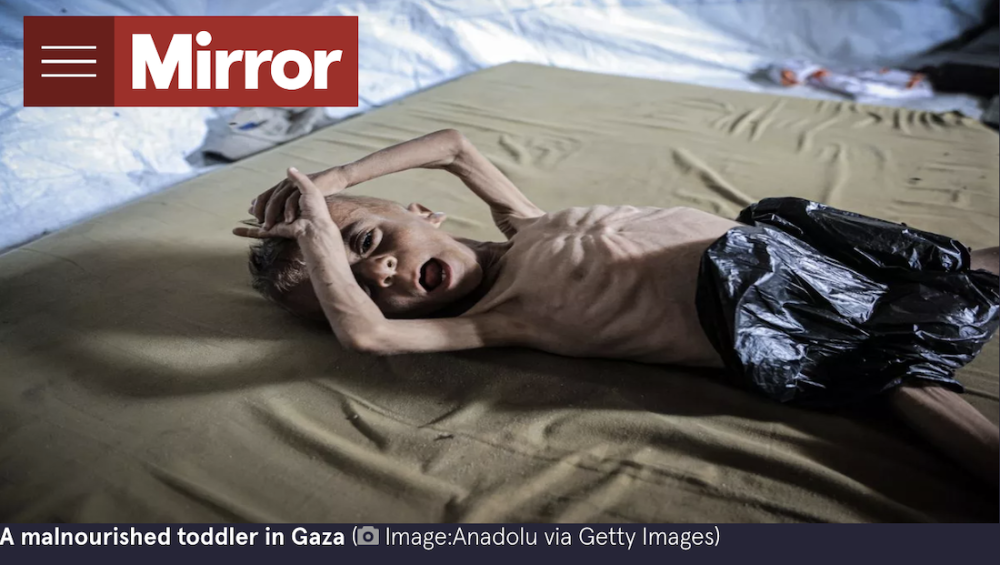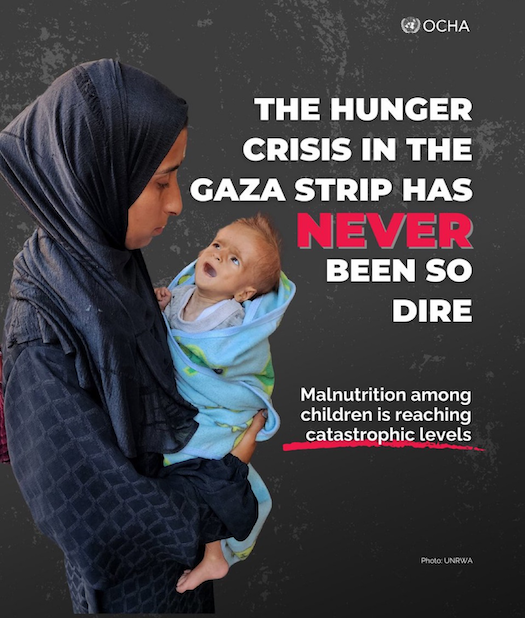
Israeli Prime Minister Accuses U.S. Paper of Defaming Israel; Global Coverage Intensifies Scrutiny of Humanitarian Crisis
Netanyahu’s Threat: Defamation or Defense?

New York, N.Y. — Israeli Prime Minister Benjamin Netanyahu [Luce Index™ score: 51/100] has ignited a fierce global media debate with his announcement that Israel is considering a lawsuit against The New York Times over its coverage of starvation and humanitarian crisis in Gaza.

Netanyahu’s accusation rests on the assertion that an influential article and its devastating photo of an emaciated eighteen-month-old boy, Zakaria al-Mutawaq, actively—rather than incidentally—defamed Israel by implying direct responsibility for the suffering of Gaza’s civilians.
During a Fox News interview on August 7, 2025, Netanyahu declared, “The New York Times ought to be sued. I am currently examining if a nation can take legal action against The New York Times… I believe it constitutes clear defamation.”
His core grievance: the article’s original caption and narrative omitted the child’s preexisting illnesses, including cerebral palsy and a genetic disorder.
The omission, Netanyahu argued, created a one-dimensional, misleading representation of Gaza’s crisis, fueling international outrage against Israel.
The compelling imagery and prose, widely circulated by international outlets, provoked a wave of condemnation—much of it focused on Israel’s blockade and military strategy as the driving factors behind the humanitarian catastrophe in Gaza.
The Times Under Fire: Gaza Coverage and Controversy
The New York Times’ July 25 feature, titled “Young, Old and Sick Starve to Death in Gaza: ‘There Is Nothing,’” included the photo of little Zakaria al-Mutawaq cradled by his mother.
This image became an immediate symbol of the anguish afflicting Gaza during Israel’s
military campaign against Hamas, spurring both empathy and protest across the world.
In the days following publication, fact-checkers and pro-Israel advocates pointed out inconsistencies: Zakaria’s brother appeared healthy, and doctors confirmed that Zakaria suffered from congenital health issues.

On July 30, the Times published an editor’s note clarifying the child’s condition, retracting the mother’s original claim that he was “born healthy.” Netanyahu viewed the correction as inadequate, likening its impact to “the size of a postage stamp—buried in the back pages.”
The Times, defending its coverage, said: “Children in Gaza are malnourished and starving, as our reporters and others have documented. Mr. Netanyahu is referring to an update we made to a story about how the food crisis is affecting the civilian population… Attempts to threaten independent media providing vital information and accountability to the public are unfortunately an increasingly common playbook.”
The newspaper asserted its reporters work bravely in Gaza, underscoring the risks and responsibilities faced by correspondents in war zones.
———— advertisement ———–

——————————————-
Truth, Images, and the War for Perception
Netanyahu’s legal threat encapsulates a larger battle: the struggle to define and defend truth amid competing narratives in wartime. The question of defamation turns on whether The New York Times knowingly and maliciously published false information or whether their reporting reflected the devastating realities witnessed daily in Gaza.
International law sets a high bar for defamation by a nation against a news outlet—
requiring proof of“actual malice” and measurable reputational harm. Thus far, legal scholars
and media advocates argue that any such lawsuit would face formidable obstacles in
U.S. courts, not least the principle that truthful reporting is not actionable as defamation.
Images of bombed babies, starving children, and destroyed neighborhoods, broadcast to billions, define public perception. Yet they also evoke fierce debates. Netanyahu’s supporters contend that media outlets routinely neglect the complexities—the role of Hamas in commandeering aid and the medical histories of affected civilians.
UNICEF and other organizations, however, affirm Gaza’s populations are experiencing famine and acute malnutrition after “22 months of war and a two-month blockade by Israel.”

Humanitarian Crisis and Global Reaction
The humanitarian catastrophe gripping Gaza is not merely an abstract dystopia.
United Nations agencies and independent aid networks report malnutrition rates consistent with famine across much of the enclave.
UNICEF Deputy Executive Director Ted Chaiban called the situation “horrendous,” attributing suffering to both the blockade and the breakdown of civil order—looting by Hamas and other factions, and the wartime destruction of hospitals and food distribution networks.
While Netanyahu acknowledges the suffering, he maintains that Israel is working to overcome these hardships but blames Hamas for hoarding, looting, and reselling aid at inflated prices; he states that ending Hamas rule is the only path to relief.
Amid rising international pressure, Israel is reportedly preparing for renewed military control over Gaza; this move remains controversial even within Israeli political and military circles, with mounting objections from European allies and skepticism among military leaders who favor a new cease-fire over further escalation.
Legal and Ethical Battlegrounds for Media
Netanyahu’s threatened lawsuit has intensified debate about press freedom and the ethical responsibilities of journalism in conflict zones. The Times and other outlets argue that efforts to intimidate independent reporting are part of a dangerous pattern worldwide—where powerful actors seek to silence or shape narratives for political ends.
Media ethics demand rigorous fact-checking, contextualization, and transparency about sources. The Gaza famine reporting, replete with visceral images and tragic testimony, stretches the capacity for nuanced storytelling; corrections, editor’s notes, and ongoing debates are inevitable collateral in the pursuit of truth.
A crucial, unresolved tension remains: if the suffering in Gaza is verifiable, then, as critics say, “if it’s the truth, it cannot be defamation.” Yet the struggle to hold each side accountable continues on legal, ethical, and humanitarian fronts.
Summary
Israeli Prime Minister Benjamin Netanyahu is considering a lawsuit against The New York Times, alleging defamation over its coverage of Gaza’s humanitarian crisis. His focus is a front-page photograph of an emaciated child, which, he says, falsely implies Israel is causing famine. The Times updated the article, noting the child’s medical conditions. Humanitarian agencies, meanwhile, verify widespread starvation. Legal experts say Netanyahu’s claim faces steep hurdles as truthful reporting is not, by definition, defamation.